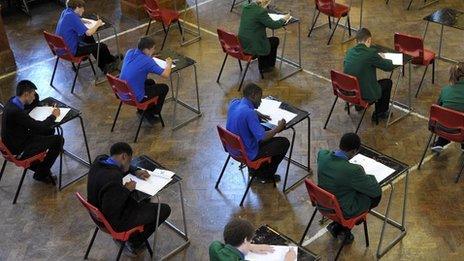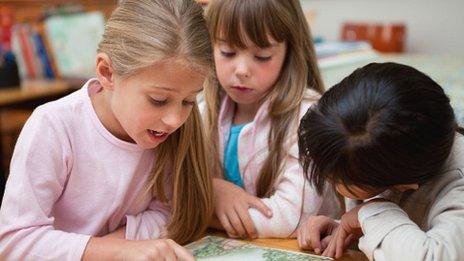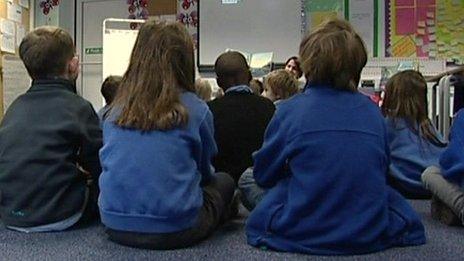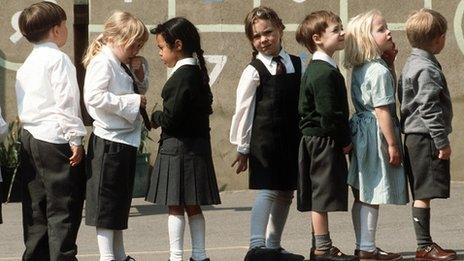More super-size primary schools in population surge
- Published

The numbers in the school system have risen to 8.3 million
The impact of the population boom on England's school system is revealed in annual official figures - showing more super-size primary schools and infant classes over legal limits.
The pressure on places means there are now 77 primary schools with more than 800 pupils, up from 58 last year.
The number of infant classes unlawfully above the limit of 30 pupils has more than doubled since last year to 549.
The figures are from the Department for Education's annual census.
This snapshot of schools in January 2014 shows a rising school population that is increasingly ethnically diverse and in which almost one in five primary pupils speaks English as a second language.
Changing population
There are 8.3 million pupils enrolled in England's schools - up by 1% since January 2013, driven by an increase in numbers of primary age children.
This is the fifth successive year of rising primary school numbers, after a previous long downward trend.
But the census shows that there are currently fewer primary schools than when the numbers began to rise in 2009-2010.
There are signs of the pressures being placed on the system.
The number of primary schools with more than 800 pupils has risen by a third - and this trend is likely to continue, with many schools adding extra classes in response to rising demand.
Although only a small proportion of the total, the number of infant classes "unlawfully" exceeding limits on class sizes has risen in a year from 0.4% to 0.9%.
But a much larger proportion are over this 30-pupil limit in a way deemed as lawful, because these extra pupils are in categories that are exempt from the limits.
There are 4.2% of infant classes over the maximum limit, up from 3.7% last year, with reasons such as admitting pupils who have moved into the area outside of the usual admissions round.
Regional differences
Ethnic minority pupils accounted for 60% of the increase in the number of pupils in primary schools, says the census.
Almost 30% of pupils in primary schools are now from ethnic minorities - up by 1% since last year.
But there are very wide regional variations.
In the 14 central London boroughs, more than 80% of pupils in primary schools are from ethnic minorities. In north-east England the figure is about 10%.
There are more than a million children who have a first language other than English.
In primary school, this is 18.7% of pupils, up by 0.6% since last year. In secondary school, the proportion without English as a first language has risen by 0.7% to 14.3%.
In inner London, 56% of pupils do not have English as a first language. In the North East the figure is 6%.
Labour's shadow education secretary Tristram Hunt says the government had failed to deliver "small schools with smaller class sizes".
Mr Hunt accused the government of creating a "crisis in school places" in which "thousands more children are being crammed into overcrowded classes, threatening school standards".
A Department for Education spokesman said: "The average infant class size is up only marginally, from 27.3 to 27.4. However, we recognise the significant pressure on school places as a result of demographic trends over the last decade.
"That is why we are giving local authorities £5bn to spend on new school places over this parliament — double the amount allocated by the previous government over an equivalent period.
"This funding has already led to the creation of 260,000 new school places, all of which are in areas where there is a shortage of places, and many more new places are planned."
- Published16 April 2014

- Published22 June 2012

- Published14 March 2012
